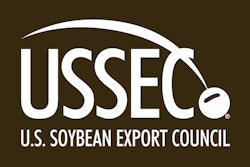
The U.S. Grains Council (USGC) is dedicated to building relationships that will move corn and other grain products around the world. Sixty years of market development have proven that building relationships build trade. Cornerstones of those positive relationships are transparency and trust, commitments USGC helps fulfill each year with its reports on U.S. corn quality.
To help achieve that effort and make inroads with existing and new customers for U.S. corn, USGC recently released its 2020/2021 Corn Harvest Quality Report as a means of providing comparable information over the years. The report shows that U.S. corn is consistently reliable, and the value chain is the best in the world.
According to the report, the 2020/2021 U.S. corn crop – entering marketing channels now – has a higher average test weight, lower moisture and lower total damage relative to each quality factor’s average of the previous five crops.
While wet weather conditions in April and May contributed to historic delays in planting and crop maturity in 2019, the 2020 crop was planted slightly ahead of the previous five crops’ average pace. Crops generally experienced favorable conditions during the remainder of the growing season resulting in a corn crop with high grain quality and yield.
“Through trade, USGC is committed to the furtherance of global food security and mutual economic benefit and offers this report to assist buyers in making well-informed decisions by providing reliable and timely information about the quality of the current U.S. crop,” says Jim Raben, USGC chairman. “This year’s ample supply allows the United States to remain the world’s leading corn exporter and accounts for an estimated 36.4% of global corn exports during the marketing year.”
The report is based on 601 yellow corn samples taken from defined areas within 12 of the top corn-producing and exporting states. The harvest report’s sampling areas are divided into three general groupings labeled Export Catchment Areas (ECAs). These ECAs are identified by the three major pathways to export markets:
- The Gulf ECA consists of areas that typically export corn through U.S. Gulf ports
- The Pacific Northwest ECA includes areas exporting corn through Washington, Oregon and California ports
- The Southern Rail ECA comprises areas generally exporting corn to Mexico by rail
- The 2020/2021 Corn Harvest Quality Report results show:
- 84.7% of samples met the grade factor requirements for U.S. No. 1 grade and 94.5% met the grade factor requirements for U.S. No. 2
- Higher test weight than the 2019 and five-year average
- Lower average broken corn and foreign material (BCFM) than 2019
- Lower average total damage than 2019 and the five-year average
- Lower average moisture content than 2019 or the five-year average
- Higher-than-average protein concentration than 2019 and the five-year average
- Lower average stress cracks than 2019
- Lower average 100-kernel weight than 2019 or the five-year average
- More than 99% of the samples tested below the U.S. Food and Drug Administration (FDA) action level for aflatoxins
- 100% of the samples tested below the FDA advisory level for deoxynivalenol (DON) or vomitoxin
- 98.9% tested below the FDA’s strictest guidance level for fumonisin
The 2020 U.S. corn crop is expected to be the third-largest (368.49 million metric tons/14,507 million bushels). It has the third-highest average yield on record (11.04 metric tons/hectare or 175.8 bushels/acre), according to the U.S. Department of Agriculture World Agricultural Supply and Demand Estimate.
The corn’s quality characteristics identified at harvest establish the foundation for the quality of the grain, ultimately arriving at export customers’ doors. As corn passes through the U.S. marketing system, however, it’s mingled with corn from other locations; aggregated into trucks, barges and railcars; and stored, loaded and unloaded several times. Therefore, the corn’s quality and condition can change between the initial market entry and the export elevator.
For this reason, in addition to the corn harvest quality report, a second USGC report, the 2020/2021 Corn Export Cargo Quality Report, will measure corn quality at export terminals at the point of loading and will be available in early 2021.
The second report is intended to help international buyers of U.S. corn understand the initial quality of U.S. yellow commodity corn as it enters the merchandising channel and is assembled for export.
USGC has a full-time presence in 14 locations. It operates in more than 50 countries specifically to offer information such as what is contained in the corn quality reports to customers. This year, the report will be rolled out virtually and with hybrid conferences,
Presentations are scheduled through the first quarter of 2021 for buyers in South Asia, Latin America, Mexico, the Middle East, North Africa and Northeast Asia. Each will be specialized in the local market and offer participants clear expectations regarding corn quality for this marketing year.
Providing supporting studies like the 2020/2021 Corn Harvest Quality Report allows end-users worldwide to make confident, informed buying decisions.
Read the full 2020/2021 Corn Harvest Quality Report by clicking here and look for more information on rollout events in 2021. ■

















